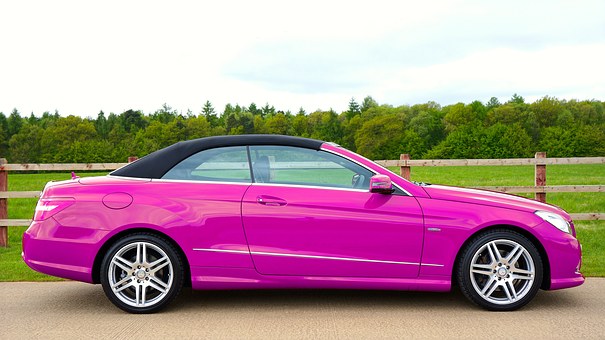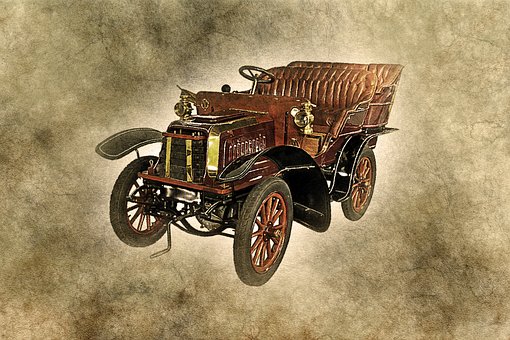History Of Automobile Industries In India

The automotive industry in India is one of the largest in the world and one of the fastest growing globally
. India's passenger car and commercial vehicle manufacturing industry is the sixth largest in the world, with an annual production of more than 4.7 million units in 2010. According to recent reports, India is set to overtake Brazil to become the sixth largest passenger vehicle producer in the world, growing 16 to 18 per cent to sell around three million units in the course of 2011-12. In 2009, India emerged as Asia's fourth largest exporter of passenger cars, behind Japan, South Korea, and Thailand. In 2010, India reached as Asia's third largest exporter of passenger cars, behind Japan and South Korea beating Thailand.As of 2010, India is home to 40 million passenger vehicles. More than 3.7 million automotive vehicles were produced in India in 2010 (an increase of 33.9%), making the country the second fastest growing automobile market in the world. According to the Society of Indian Automobile Manufacturers, annual vehicle sales are projected to increase to 5 million by 2015 and more than 9 million by 2020. By 2050, the country is expected to top the world in car volumes with approximately 611 million vehicles on the nation's roads.
The first car ran on India's roads in 1897. Until the 1930s, cars were imported directly, but in very small numbers.
Embryonic automotive industry emerged in India in the 1940s. Mahindra & Mahindra was established by two brothers as a trading company in 1945, and began assembly of Jeep CJ-3A utility vehicles under license from Willys. The company soon branched out into the manufacture of light commercial vehicles (LCVs) and agricultural tractors.

Following the independence, in 1947, the Government of India and the private sector launched efforts to create an automotive component manufacturing industry to supply to the automobile industry. However, the growth was relatively slow in the 1950s and 1960s due to nationalisation and the license raj which hampered the Indian private sector. After 1970, the automotive industry started to grow, but the growth was mainly driven by tractors, commercial vehicles and scooters. Cars were still a major luxury. Japanese manufacturers entered the Indian market ultimately leading to the establishment of Maruti Udyog. A number of foreign firms initiated joint ventures with Indian companies.
In the 1980s, a number of Japanese manufacturers launched joint-ventures for building motorcycles and light commercial-vehicles. It was at this time that the Indian government chose Suzuki for its joint-venture to manufacture small cars. Following the economic liberalisation in 1991 and the gradual weakening of the license raj, a number of Indian and multi-national car companies launched operations. Since then, automotive component and automobile manufacturing growth has accelerated to meet domestic and export demands.
Following economic liberalization in India in 1991, the Indian automotive industry has demonstrated sustained growth as a result of increased competitiveness and relaxed restrictions. Several Indian automobile manufacturers such as Tata Motors, Maruti Suzuki and Mahindra and Mahindra, expanded their domestic and international operations. India's robust economic growth led to the further expansion of its domestic automobile market which has attracted significant India-specific investment by multinational automobile manufacturers. In February 2009, monthly sales of passenger cars in India exceeded 100,000 units and has since grown rapidly to a record monthly high of 182,992 units in October 2009. From 2003 to 2010, car sales in India have progressed at a CAGR of 13.7%, and with only 10% of Indian households owning a car in 2009 (whereas this figure reaches 80% in Switzerland for example) this progression is unlikely to stop in the coming decade. Congestion of Indian roads, more than market demand, will likely be the limiting factor.
The majority of India's car manufacturing industry is based around three clusters in the south, west and north. The southern cluster consisting of Chennai and Bangalore is the biggest with 35% of the revenue share. The western hub near Mumbai and Pune contributes to 33% of the market and the northern cluster around the National Capital Region contributes 32%. Chennai, is also referred to as the "Detroit of India" with the India operations of Ford, Hyundai, Renault, Mitsubishi, Nissan ,BMW, Hindustan Motors, Daimler, Caparo, and PSA Peugeot Citron is about to begin their operations by 2014. Chennai accounts for 60% of the country's automotive exports. Gurgaon and Manesar in Haryana form the northern cluster where the country's largest car manufacturer, Maruti Suzuki, is based. The Chakan corridor near Pune, Maharashtra is the western cluster with companies like General Motors, Volkswagen, Skoda, Mahindra and Mahindra, Tata Motors, Mercedes Benz, Land Rover, Fiat and Force Motors having assembly plants in the area. Aurangabad with Audi, Skoda and Volkswagen also forms part of the western cluster. Another emerging cluster is in the state of Gujaratwith manufacturing facility of General Motors in Halol and further planned for Tata Nano at Sanand. Ford, Maruti Suzuki and Peugeot-Citroen plants are also set to come up in Gujarat. Kolkatta with Hindustan Motors, Noida with Honda and Bangalore with Toyota are some of the other automotive manufacturing regions around the country.
by: vinodkumar The Newest Version Of Auto Backlink Service Has Been Launched What Everyone Really Should Understand About Vehicle Insurance Sarah "bogi" Lateiner Turns Auto Repair Shop Around Learn How Auto Insurance Works What Trusted Car Shipping Companies Can Make For Your Auto Business Venture Start Your Motorcycle Journey With Motorcycle Training Wales The Need For Company Car Insurance Cover Just How To Go About Finding The Best Car Insurance Coverage What Is The Right Type Of Motor Car Insurance For You ? (the Right Type Of Motor Car Insurance) Autocop Car Central Locking Systems Keeps Your Car Trouble Free The Pros And Cons Associated With 3rd Party Car Insurance The Advantages And Disadvantages Of 3rd Party Automobile Insurance Searching For The Best Cheap Auto Insurance